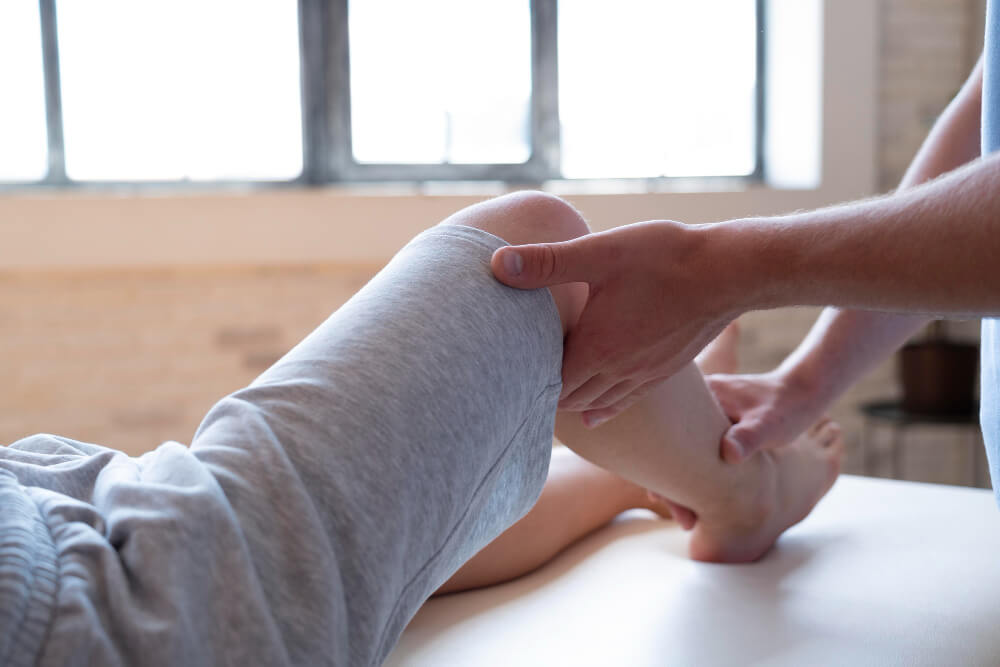Understanding Anterior Cruciate Ligament (ACL) Injuries: Signs, Treatments, and Recovery
The anterior cruciate ligament (ACL) is a crucial ligament within your knee joint. It plays a vital role in stabilizing the knee and controlling its rotation. Unfortunately, ACL injuries are quite common, especially among athletes who participate in sports that involve pivoting, jumping, and sudden changes in direction. This article delves into everything you need to know about ACL injuries, from recognizing the signs and symptoms to exploring treatment options and navigating the road to recovery.
Recognizing the Signs of an ACL Tear
A torn ACL can occur due to a sudden twisting motion of the knee or a forceful landing. Here are some key signs that might indicate an ACL tear:
- Popping Sound: A popping or snapping sound at the moment of injury is a common symptom of a torn ACL.
- Pain and Swelling: The injured knee will experience immediate pain, followed by swelling within 24 hours.
- Instability: The knee will feel unstable and may give way during weight-bearing activities, causing you to buckle or stumble.
- Loss of Range of Motion: You might experience difficulty bending or straightening your knee fully.
- Tenderness: The area around the joint line will be tender to the touch.
- Discomfort While Walking: Walking, especially putting weight on the injured leg, might become uncomfortable or even impossible.
It’s important to note that the severity of these symptoms can vary depending on the grade of the ACL tear. A partial tear might not cause significant instability, while a complete tear can make walking very difficult.
When to Seek Medical Attention
If you experience any of the signs mentioned above, especially after a knee injury, it’s crucial to seek medical attention immediately. A doctor can perform a physical examination to assess the stability of your knee and order imaging tests like X-rays or an MRI scan to confirm the presence and severity of the ACL tear. Early diagnosis and treatment are essential for optimal recovery and preventing further complications.
Treatment Options for a Torn ACL
The treatment plan for a torn ACL will depend on several factors, including your age, activity level, the severity of the tear, and any other existing knee injuries. Here’s an overview of the two main approaches:
Non-Surgical Treatment
Non-surgical treatment is often recommended for less active individuals with a partial ACL tear. This approach focuses on reducing pain and inflammation, regaining strength and stability in the knee, and improving proprioception (your body’s awareness of joint position). The typical non-surgical treatment plan may include:
- RICE Method: Rest, Ice, Compression, and Elevation of the injured knee to reduce swelling and inflammation.
- Pain Medication: Over-the-counter pain relievers like ibuprofen can help manage pain.
- Physical Therapy: A customized physical therapy program is vital for regaining strength, flexibility, and stability in the knee muscles surrounding the ACL. Exercises will focus on improving balance, coordination, and proprioception.
- Bracing: Wearing a knee brace can provide additional support and stability during rehabilitation.
Surgical Treatment
Surgical reconstruction is usually recommended for individuals with a complete ACL tear, especially if they are active and want to return to sports that put a lot of stress on the knee. Several surgical techniques exist for ACL reconstruction, each with its advantages and disadvantages. Here are some common approaches:
- Hamstring Graft: This procedure utilizes a tendon from your hamstring muscle to reconstruct the ACL.
- Patellar Tendon Graft: The patellar tendon, located below your kneecap, can also be used as a graft for ACL reconstruction.
- Allograft Reconstruction: In some cases, a tendon from a deceased donor might be used to reconstruct the ACL.
ACL reconstruction surgery is typically outpatient. Recovery after surgery involves a lengthy physical therapy program that can take several months to complete. Rehabilitation focuses on regaining strength, flexibility, and full range of motion in the knee.
Living with a Torn ACL
If you choose not to undergo surgery or have a partial tear, you can still live an active life with a torn ACL. However, it’s important to manage your activities and take precautions to prevent further injuries. Here are some tips for living with a torn ACL:
- Strength Training: Regularly strengthening the muscles around the knee joint is crucial for providing stability and support.
- Balance Exercises: Improving your balance can help prevent future falls and injuries.
- Low-Impact Activities: Choose activities that put less stress on the knee, such as swimming, cycling, or yoga.
- Bracing: Wearing a knee brace during certain activities can offer additional support and protection.


